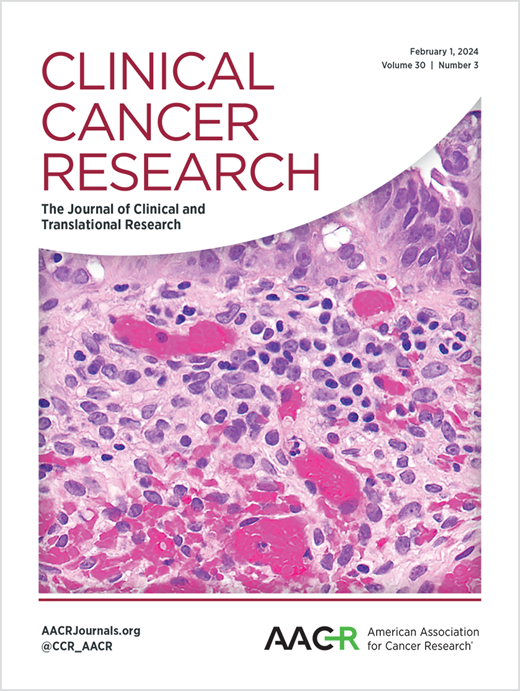Vvax001, a Therapeutic Vaccine for Patients with HPV16-positive High-grade Cervical Intraepithelial Neoplasia: a Phase II Trial
IF 10
1区 医学
Q1 ONCOLOGY
引用次数: 0
Abstract
Purpose: Human papillomavirus (HPV) infection is the major cause of (pre)malignant cervical lesions. We previously demonstrated that Vvax001, a replication-incompetent Semliki Forest virus (SFV) vaccine encoding HPV type 16 (HPV16) E6 and E7, induced potent anti-E6 and -E7 cytotoxic T-cell responses. Here, we investigated the clinical efficacy of Vvax001 in patients with HPV16-positive cervical intraepithelial neoplasia grade 3 (CIN3). Patients and Methods: Patients with newly diagnosed HPV16-positive CIN3 were eligible for participation. Patients received 3 immunizations of Vvax001 (5x107 infectious particles) at a three-week interval. Up to 19 weeks after the last immunization patients were monitored for regression of CIN3 by colposcopy. A colposcopy-guided biopsy was taken at the last visit and a standard of care loop excision was performed only in case of remaining CIN2/3. Histopathologic response rates, HPV16 clearance, treatment-related adverse events (trAEs), and vaccine-induced immune responses were assessed. Results: A total of 18 patients were enrolled and fully immunized. Colposcopic examination revealed a reduction in CIN3 lesion sizes in 17/18 patients (94%) already evident from 3 weeks onwards after the last immunization. A histopathological complete response (regression to CIN1 or no dysplasia) was observed in 9/18 patients (50%), and HPV16 clearance in 10/16 patients (63%). Vvax001 did not induce clearance of other HPV types. To date, no recurrences have been observed, with a median and longest disease-free survival of 20 and 30 months, respectively. No serious AEs were observed. Conclusions: Treatment with Vvax001 is safe, feasible, and shows preliminary clinical effectiveness in patients with HPV16-associated CIN3 lesions.求助全文
约1分钟内获得全文
求助全文
来源期刊

Clinical Cancer Research
医学-肿瘤学
CiteScore
20.10
自引率
1.70%
发文量
1207
审稿时长
2.1 months
期刊介绍:
Clinical Cancer Research is a journal focusing on groundbreaking research in cancer, specifically in the areas where the laboratory and the clinic intersect. Our primary interest lies in clinical trials that investigate novel treatments, accompanied by research on pharmacology, molecular alterations, and biomarkers that can predict response or resistance to these treatments. Furthermore, we prioritize laboratory and animal studies that explore new drugs and targeted agents with the potential to advance to clinical trials. We also encourage research on targetable mechanisms of cancer development, progression, and metastasis.
 求助内容:
求助内容: 应助结果提醒方式:
应助结果提醒方式:


